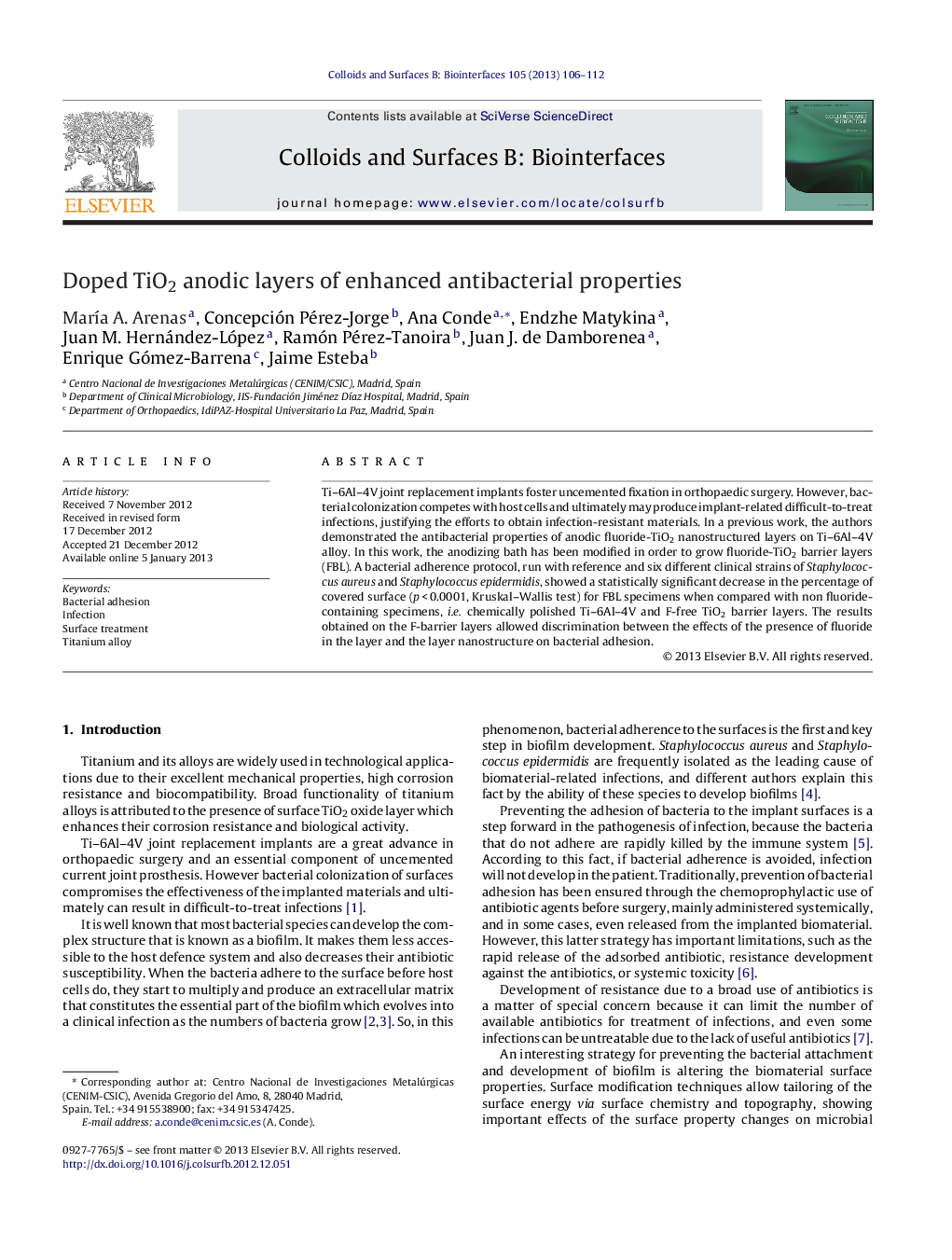| Article ID | Journal | Published Year | Pages | File Type |
|---|---|---|---|---|
| 600218 | Colloids and Surfaces B: Biointerfaces | 2013 | 7 Pages |
Ti–6Al–4V joint replacement implants foster uncemented fixation in orthopaedic surgery. However, bacterial colonization competes with host cells and ultimately may produce implant-related difficult-to-treat infections, justifying the efforts to obtain infection-resistant materials. In a previous work, the authors demonstrated the antibacterial properties of anodic fluoride-TiO2 nanostructured layers on Ti–6Al–4V alloy. In this work, the anodizing bath has been modified in order to grow fluoride-TiO2 barrier layers (FBL). A bacterial adherence protocol, run with reference and six different clinical strains of Staphylococcus aureus and Staphylococcus epidermidis, showed a statistically significant decrease in the percentage of covered surface (p < 0.0001, Kruskal–Wallis test) for FBL specimens when compared with non fluoride-containing specimens, i.e. chemically polished Ti–6Al–4V and F-free TiO2 barrier layers. The results obtained on the F-barrier layers allowed discrimination between the effects of the presence of fluoride in the layer and the layer nanostructure on bacterial adhesion.
Graphical abstractFigure optionsDownload full-size imageDownload as PowerPoint slideHighlights► In this work, a new formulation of the anodizing bath has been developed to fabricate fluoride-containing barrier films (FBL) with no change in topography. ► This paper demonstrates the enhanced antibacterial properties achieved by the F incorporated in TiO2 oxide layer grown by anodizing process. ► The studies performed on this FBL films discriminate the effect of the F from the surface nanostructure on bacterial adhesion. ► The bacterial adhesion studies performed shows a statistically significant decrease in the bacterial adhesion in comparison to fluorine free barrier layers (BL).
